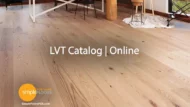Maintaining your Portland home’s integrity and value requires consistent attention throughout the year. The Pacific Northwest’s unique climate, characterized by wet winters and mild summers, presents specific challenges that necessitate a tailored approach to home upkeep. By adhering to a seasonal maintenance schedule, you can proactively address potential issues, ensuring your home remains in optimal condition. This comprehensive guide outlines essential tasks for each season, helping you preserve your investment and enjoy a comfortable living environment.
Spring: Revitalize and Repair
As winter recedes, spring offers an ideal opportunity to inspect and rejuvenate your home. The milder weather allows for thorough assessments of both interior and exterior areas, enabling timely repairs and maintenance. Addressing issues now can prevent minor problems from escalating into costly repairs later. Additionally, preparing your home during this season ensures it’s ready for the demands of summer, enhancing comfort and efficiency. By dedicating time to these tasks, you preserve your property’s value and create a safer and more enjoyable living environment for the months ahead.
Inspect the Roof and Gutters
Begin by examining your roof for damaged or missing shingles. Prompt repairs can prevent leaks and structural damage. Additionally, clean gutters and downspouts to ensure proper drainage, reducing the risk of water damage. Neglecting these areas can lead to costly repairs and compromise your home’s integrity. Regular maintenance not only preserves the aesthetic appeal of your property but also safeguards it against potential hazards. Addressing these tasks in the spring sets a solid foundation for a well-maintained home throughout the year.
Service HVAC Systems
Next, schedule a professional inspection of your heating, ventilation, and air conditioning (HVAC) systems to identify potential issues early. Regular maintenance enhances efficiency, reduces breakdowns, and extends the lifespan of your equipment. It also improves indoor air quality by ensuring filters and ducts are clean. According to the U.S. Department of Energy, well-maintained HVAC systems can reduce energy bills by up to 15%, making this a cost-effective investment in comfort and energy savings.
Examine Windows and Doors
After addressing the roof and HVAC systems, inspecting your home’s windows and doors for drafts is crucial. Even minor gaps can lead to significant energy loss, causing your heating and cooling systems to work harder and increasing utility bills. To detect drafts, hold a lit incense stick or candle near the edges of windows and doors; if the smoke or flame wavers, air leaks. Sealing these gaps with weatherstripping or caulk enhances energy efficiency and comfort. According to the U.S. Department of Energy, reducing drafts can lower energy use by 5% to 30% annually. Regularly inspecting and maintaining seals around windows and doors conserves energy and contributes to a more comfortable living environment.
Prepare the Lawn and Garden
Finally, aerate and fertilize your lawn to promote healthy growth. Aeration alleviates soil compaction, allowing roots to access air, water, and nutrients more effectively. Fertilizing provides essential nutrients that may be lacking after winter. Prune shrubs and trees to encourage new development and remove any winter damage. Proper pruning enhances plant health and improves the overall appearance of your landscape. Additionally, mulch should be applied to garden beds to retain moisture and suppress weeds. These steps prepare your lawn and garden for the growing season, ensuring a vibrant and healthy outdoor space.
Summer: Enhance and Protect
With warmer weather, summer is perfect for exterior projects and preventive measures. This season provides an opportunity to focus on tasks that enhance your home’s appearance and protect it from potential damage. Addressing these areas allows you to enjoy a comfortable and safe living environment throughout the summer.
Paint and Seal Exterior Surfaces
First, inspect your home’s exterior for peeling paint or exposed wood. A fresh paint or sealant protects against moisture and pests, preserving your home’s appearance and structure. Regular painting and sealing prevent wood rot and deterioration, extending the lifespan of your siding and trim. Choose high-quality, weather-resistant products to ensure long-lasting protection. Maintaining your home’s exterior surfaces enhances curb appeal and safeguards your investment.
Clean and Repair Decks and Patios
Next, clean decks and patios to remove dirt and mildew. Use appropriate cleaning solutions and tools to avoid damaging surfaces. Repair any loose boards or cracks to ensure safety and longevity. The North American Deck and Railing Association reports that regular maintenance can extend a deck’s life by up to 20 years. Consider applying a protective sealant to wooden decks to prevent moisture damage and UV deterioration. Regular upkeep of outdoor spaces not only ensures safety but also provides a pleasant area for relaxation and entertainment.
Service Lawn Equipment
Then, lawnmowers and other equipment can be maintained by sharpening blades and changing oil. Proper upkeep ensures efficient operation and prolongs the life of your tools. Sharp blades provide a clean cut, promoting healthier grass growth. Regular maintenance also reduces the risk of equipment failure during peak usage times—store equipment in a dry, sheltered area to protect it from the elements. By keeping your lawn equipment in good condition, you ensure a well-manicured lawn and extend the lifespan of your tools.
Inspect Plumbing for Leaks
Finally, check hoses and faucets for leaks, especially those connected to irrigation systems. Addressing leaks promptly conserves water and prevents damage. Inspect visible pipes for signs of corrosion or wear and replace damaged components as needed. Regularly test water pressure to ensure it remains within safe limits, as excessive pressure can cause leaks. Maintaining your plumbing system prevents water waste and avoids costly repairs.
Fall: Prepare for Cooler Weather
As temperatures drop, focus on tasks that ready your home for winter’s challenges. Preparing in the fall ensures your home remains comfortable and efficient during the colder months. Addressing these areas can prevent potential issues and maintain a safe living environment.
Clean Chimneys and Fireplaces
First, professionally clean your chimney and fireplace to remove creosote buildup and reduce fire hazards. The National Fire Protection Association recommends annual inspections to ensure safety. Creosote, a byproduct of burning wood, is highly flammable and can lead to dangerous chimney fires if not regularly removed. Additionally, professional cleaning helps identify structural issues or blockages, such as bird nests or debris, that could impede proper ventilation. Maintaining a clean chimney enhances safety and improves your fireplace’s efficiency, ensuring a warm and cozy environment during colder months.
Inspect and Insulate Attics
Next, examine your attic for proper insulation and signs of pests. Adding insulation can improve energy efficiency, potentially lowering heating costs by up to 10%, according to the Environmental Protection Agency. Proper insulation prevents heat loss, maintains a consistent indoor temperature and reduces the strain on your heating system. While inspecting, look for signs of pests like droppings or nests, as rodents and insects can damage insulation and compromise its effectiveness. Addressing these issues promptly ensures your attic remains a barrier against heat loss and pest infestations, contributing to a comfortable and energy-efficient home.
Service Heating Systems
 Then, schedule a professional inspection of your heating system to ensure it’s operating safely and efficiently. Replace filters and consider upgrading to a programmable thermostat for better energy management. Regular maintenance can prevent unexpected breakdowns during peak usage times and extend the lifespan of your equipment. A programmable thermostat allows for precise temperature control, optimizing energy use and reducing utility bills. According to the U.S. Department of Energy, properly using a programmable thermostat can save homeowners up to 10% annually on heating and cooling costs. Investing in these upgrades enhances comfort and promotes cost savings.
Then, schedule a professional inspection of your heating system to ensure it’s operating safely and efficiently. Replace filters and consider upgrading to a programmable thermostat for better energy management. Regular maintenance can prevent unexpected breakdowns during peak usage times and extend the lifespan of your equipment. A programmable thermostat allows for precise temperature control, optimizing energy use and reducing utility bills. According to the U.S. Department of Energy, properly using a programmable thermostat can save homeowners up to 10% annually on heating and cooling costs. Investing in these upgrades enhances comfort and promotes cost savings.
Seal Cracks and Gaps
Finally, inspect your home’s exterior for cracks or gaps, particularly around windows and doors. Sealing these openings prevents drafts and keeps pests out. Use caulk for small cracks and expanding foam for larger gaps to create an airtight seal. This improves energy efficiency by preventing heat loss and enhances indoor comfort by eliminating cold spots. Additionally, sealing entry points deters insects and rodents from entering your home, reducing the risk of infestations. Maintaining your home’s exterior seals is a simple yet effective way to protect your property and maintain a comfortable living environment.
Winter: Monitor and Maintain
During winter, focus on indoor maintenance and monitor your home for weather-related issues. Proactive attention to potential problems can prevent costly repairs and ensure a comfortable living environment. Regular inspections and timely interventions are key to maintaining your home’s integrity during the colder months.
Check for Ice Dams
First, inspect your roof for ice dams after heavy snowfall, which can cause leaks and damage. Safely remove snow buildup and ensure proper attic ventilation to prevent formation. Ice dams occur when heat escapes through the roof, melting snow that refreezes at the eaves, leading to water backup under shingles. To mitigate this, maintain consistent attic temperatures by sealing air leaks and adding insulation. Additionally, consider installing ice and water shields along the roof’s edge as a preventive measure.
Test Smoke and Carbon Monoxide Detectors
Next, smoke and carbon monoxide detectors batteries should be replaced and tested to ensure functionality. The National Fire Protection Association advises testing alarms monthly. During winter, the increased use of heating systems elevates the risk of fire and carbon monoxide incidents. Ensure detectors are placed on every level of your home, especially near sleeping areas. Regular maintenance of these devices is crucial for early detection and safety.
Inspect Plumbing for Freezing
Then, monitor exposed pipes for signs of freezing. Insulate vulnerable pipes and keep a trickle of water running during extreme cold to prevent bursts. Frozen pipes can lead to significant water damage and costly repairs. Pay special attention to pipes in unheated areas like basements, attics, and garages. Opening cabinet doors to allow warm air circulation can also help prevent freezing. If a pipe does freeze, thaw it gradually with a hairdryer, starting from the faucet end.
Maintain Indoor Air Quality
Finally, HVAC filters should be cleaned or replaced regularly to maintain good indoor air quality. Consider using a humidifier to combat dry winter air, which can cause discomfort and damage wood furnishings. Dry air can also lead to respiratory issues and static electricity. Maintaining humidity levels between 30% and 50% is ideal for comfort and health. Regularly cleaning air ducts and ensuring proper ventilation contribute to a healthier indoor environment.
Year-Round Maintenance Tips
Certain maintenance activities should be performed throughout the year in addition to seasonal tasks to ensure your home’s safety, efficiency, and longevity. Regular attention to these areas can prevent minor issues from escalating into costly repairs, preserving your investment and providing a comfortable living environment.
Regularly Inspect Safety Devices
Consistently test smoke and carbon monoxide detectors, and replace batteries as needed. Ensure fire extinguishers are accessible and charged. The National Fire Protection Association recommends testing alarms monthly and replacing batteries at least once a year. Additionally, fire extinguishers should be inspected annually to confirm they are in good working condition. Regularly maintaining these safety devices is crucial for early detection of hazards and effective response during emergencies.
Monitor for Pest Activity
Watch for signs of pests, such as droppings or gnaw marks. Address infestations promptly to prevent damage and health risks. Regular inspections of basements, attics, and other vulnerable areas can help detect pest activity early. Implementing preventive measures, such as sealing cracks and storing food properly, can reduce the likelihood of infestations. Engaging professional pest control services when necessary ensures thorough treatment and long-term protection.
Maintain Clean Gutters
Clean gutters regularly to prevent water damage and ensure proper drainage. Clogged gutters can lead to roof leaks and foundation issues. It’s advisable to clean gutters at least twice a year, in spring and fall, to remove leaves, debris, and other blockages. Installing gutter guards can also help minimize debris accumulation. Properly functioning gutters direct water away from your home, protecting the roof, walls, and foundation from water damage.
Check for Water Damage
Periodically inspect your home for signs of water damage, such as stains or mold. Early detection allows for timely repairs, preventing further deterioration. Pay special attention to moisture-prone areas, like bathrooms, kitchens, basements, and windows. Addressing leaks, improving ventilation, and using dehumidifiers can help prevent water damage. Regular maintenance and prompt repairs preserve your home’s structural integrity and create a healthier living environment.
Maintain Your Home’s Value All Year Long
By committing to a regular home maintenance schedule, you can address potential problems before they become costly repairs. Seasonal tasks ensure your home stays in optimal condition while enhancing energy efficiency and comfort. From cleaning gutters to inspecting HVAC systems, these efforts safeguard your investment.
Moreover, year-round attention to key areas like safety devices and water damage prevention supports a healthier, safer living environment. Whether insulating pipes in winter or aerating the lawn in spring, each task contributes to a well-maintained home. You can enjoy a comfortable and worry-free home throughout the year with consistent care.









